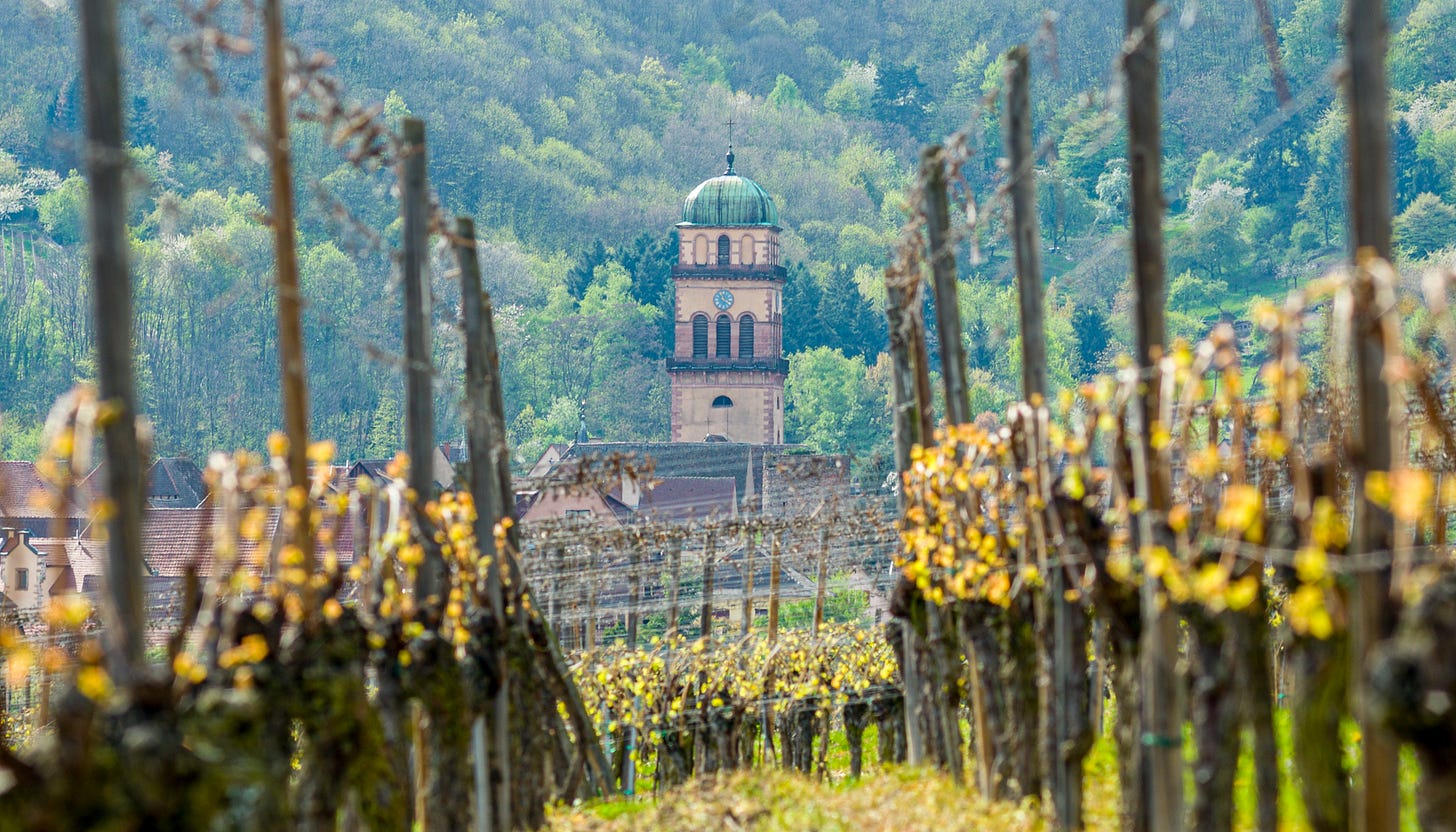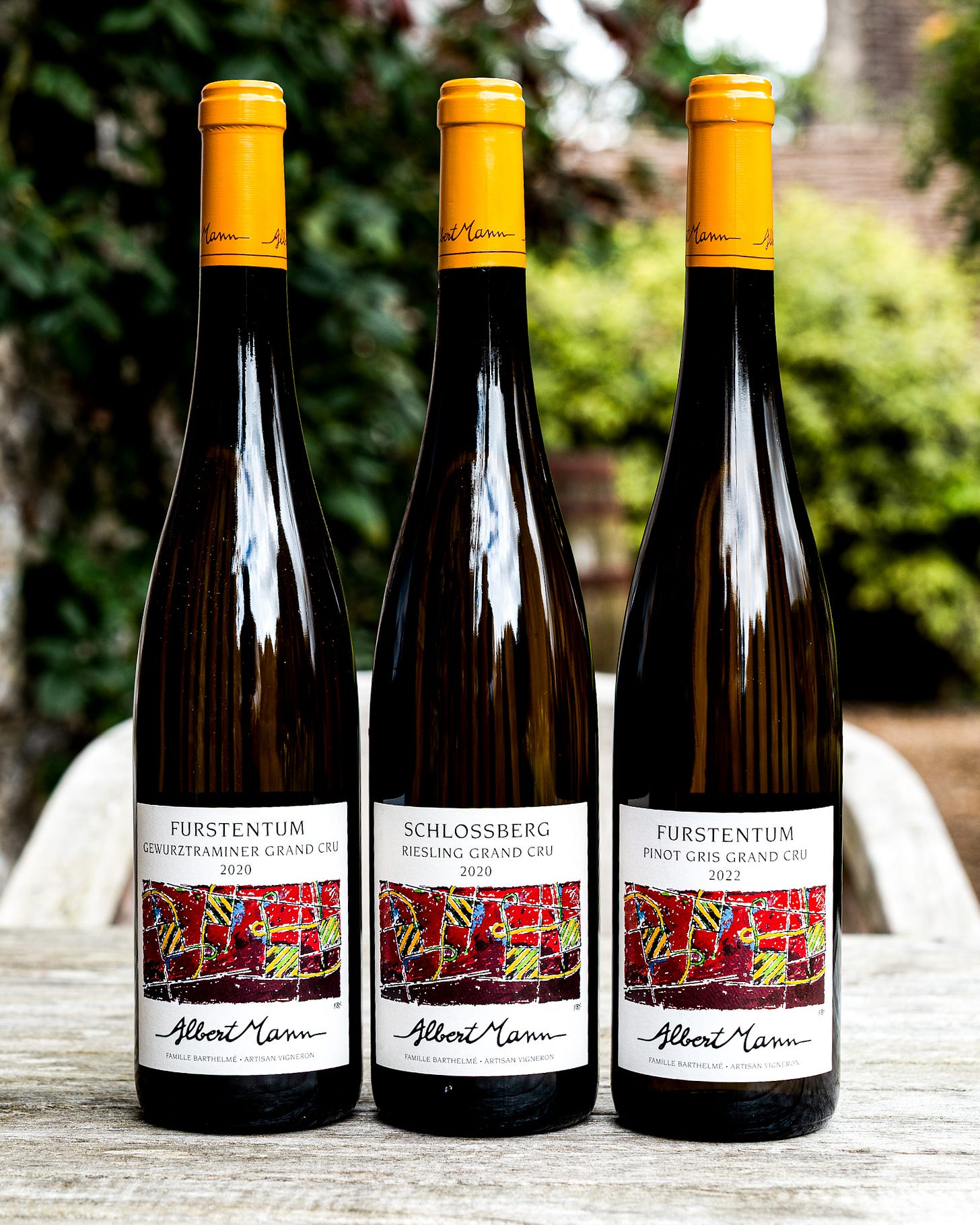Need Time: Alsace Grand Crus
… three whites for the cellar …
Alsace is one of the most fascinating and distinctive wine regions in France, producing an array of very high quality wines. However, it often flies under the radar in English-speaking markets, especially the UK.
There are a number of reasons for this.
Firstly, Alsace has a distinctly Germanic cultural feel as the wines are labeled by grape variety, unlike most of France's well-known and established vineyards that have a "region-led" system, ie Bordeaux, Burgundy, Rhône, etc.
The German "influence" is brought about by the changing ownership of the region over the centuries. From 1648 the region was annexed and most of it became part of France. Following France's defeat in the Franco-Prussian War it became part of Germany in 1871, and was then returned to France in 1919 following the Treaty of Versailles at the end of the First World War. The Third Reich annexed the region again to become part of Germany, and when that conflict ended in 1945 in was returned to France where it remains today.
Secondly, the perception that it is a sweet wine in the same vein as the German Liebfraumilch brews of the 1980s - Blue Nun and Black Tower - that fell out of favour in the UK and this is enhanced by being in a bottle of a similar shape. However, nothing could be further from the truth. Many of the wines are bone dry - perfect with seafood - and if they do contain any residual sugar, they are so well crafted that it is an essential element of a superbly balanced wine.
Thirdly, the primary wine regions of France - Champagne, Bordeaux, Burgundy, Loire, and Rhône - have marketed themselves abroad through large négociants, branding campaigns, or iconic producers. On the other hand, Alsace is dominated by small, family-owned domaines that do not have the resources to make a strong presence in export markets.
Arguably, that is part of the reason to explore this region. There are small wineries that have a pronounced house style, that are worth following because they offer exceptional quality with an artisan focus and flair. The wines from Albert Mann, listed below, are in that category.
Alsace could be defined as a "Wine Trade wine". Without question, exceptional value compared to similar quality wines from Burgundy and Loire, the region produces world-class Riesling, iconic Gewurztraminer, exquisitely dry Pinot Gris, and well-crafted sparkling wines under the Crémant designation.
The region is located in north-eastern France. However, due to the protection provided by the Vosges Mountains to the west, it has a warm, sunny and relatively dry climate. This combined with a topography that offers a broad array of sites, often at unusually high altitudes given the northern aspect of the region, that accommodate the different varietals with a perfect environment to fully ripen from the high level of sunshine hours. 90% of the production is white. In certain years the region can produce high quality Pinot Noir.
The establishment of this domaine has roots heading back to the 17th century when two families, Mann and Barthelmé, were winegrowers in Alsace. Maurice Barthelmé married Albert Mann's daughter, Marie-Claire, and gradually took over the running of domaine by 1984, before Albert Mann died in 1994. Maurice was joined by his brother Jacky, and wife Marie-Thérèse, in the late 1980s, and the two couples continue to run the operation today.
There is a distinct "house style" from this small producer, combining finesse and longevity. Their philosophy is, “Wine is the memory of the grape and is capable of transmitting the taste of the earth”. All of these wines need another few years. They are excellent at the moment, but another five for the Pinot Gris and Gewurztraminer, whereas the Riesling needs another seven and more.
These three wines come from Grand Cru sites that make up the 21-hectares the family has under vine. Furstentum is renowned for Gewurztraminer and Pinot Gris: the limestone-rich soils retain heat combined with excellent drainage that generate style and richness. Schlossberg was the first Alsace vineyard to be granted Grand Cru status in 1975. The focus is Riesling in this granite-based environment.
1 - Pinot Gris Grand Cru "Furstentum" Albert Mann 2022
£43.00 - Terra Wines
If either asparagus or artichoke were on the menu then this would be a perfect combination. Bright on the nose with intense flavours of citrus fruits. The long, pure finish is the final component preceded by an array of concentrated and rich flavours of stone fruits, that are lavishly appealing. There is a smidgeon of residual sugar that enhances the palate. This would be very appealing glass to be enjoyed with friends to set the stage for a sumptuous dinner and provide just the right note to whet the appetite. Needs time: drink 2030 onwards.
2 - Riesling Grand Cru "Schlossberg'" Albert Mann 2020
£76.00 - Terra Wines
An outstanding example of the precision that can be achieved in Alsace with the Riesling grape. Stone fruits - peach and mango - are the opening elements on the nose. Then the intensely layered structure on the palate where perfect balance is delivered between acidity and fruit, with grades of salinity and refinement. Although very drinkable today, it will continue to evolve until the early 2040s, and certainly needs to be kept in the cellar for at least another seven years.
3 - Gewurztraminer Grand Cru "Furstentum" Albert Mann 2020
£42.00 - Terra Wines
Spoiling, indulgent, focused and utterly delicious. The idea of having to keep this in the cellar for another five or more years is a tall order. However, that time will reap rewards. The wine is still evolving and there is an element of fragmentation on the palate that over the years will become an harmonious symphony when the silos of grapefruit, mango, apricot and citrus become properly forged. Spicy and superbly crafted.



